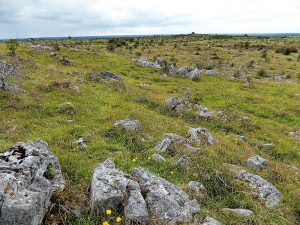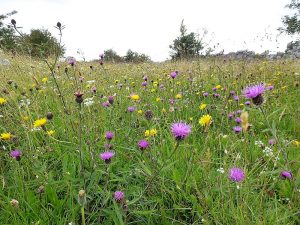Heritage Week, with an emphasis on natural heritage concludes today. Whales, bugs, badgers, bees, butterflies, birds and a wonderful array of wild places in which these creatures have their homes were showcased and the weather for some of the week and much of the country was, at least, serviceable.
It is comforting to see wild creatures behaving as they should in their habitats but grave threats to these wild havens exist. Some are in serious peril.
Under the European Union Habitats’ Directive, prime sites in Ireland and throughout the European Union were selected and designated as Special Areas of Conservation (SAC’s). These areas are legally protected under national and European Union law. Landowners who wish to carry out specific actions, known as “notifiable actions” must obtain written consent from the Minister of the Environment. Permission is not usually given for actions that would damage a site, not to mention actions that lead to a site’s destruction. The body charged with the role of protecting these precious areas is The National Parks and Wildlife Service (NPWS), under the Minister for Arts, Heritage and the Gaeltacht.
However, it appears that the National Parks and Wildlife Service is weakly led, ineffective and unresponsive. A site synopsis for each SAC is published on the NPWS website, and these do not inspire confidence that the will to act against destroyers of our heritage exists. Take the beautiful Killeglan grasslands in Roscommon, which lies around 9.5 km north of Ballinasloe alongside the R357. This stunning example of limestone grassland is a mini-Burren, in Roscommon. When I encountered the site for the first time recently, I was mesmerised to find it; why is this gem unpublicised? There is no signage, no place name, nothing to indicate its special status. My feeling is that it should be celebrated as the “Roscommon Burren”, and a marked walking route and perhaps a small interpretive facility added to highlight its features, and the characteristics of other designated sites in the vicinity.
The glow of purples and deep pinks, the more muted colours of late summer are preceded here by a wealth of colour as this is a rich site for orchids, especially noted for the nationally rare Green-winged Orchid. Unsurprisingly, it’s a wonderful butterfly site too, with a broad range of notable species, including Brimstone, Dingy Skipper, Silver-washed Fritillary, Dark Green Fritillary, Marsh Fritillary, Wall Brown and Grayling.
A closer look at the site and its surroundings provide evidence of threats to the site’s existence. Large-scale modification of the landscape has taken place around the site; a local resident showed me where habitat to the east of the R357 identical to the existing area was destroyed by bulldozers and importation of topsoil, which, to judge from images from googlemaps, took place in 2009. Damage was done to the western edge of the site (whether this is within the SAC boundary is unclear) since 2008, when part of the field was leveled and stone was bulldozed into a heap, piled up like debris from a slum clearance. Adding to my alarm was the fact that smaller stone on the unaffected area has been placed in piles scattered throughout the site. Is this a precursor to an all-out attack?
NPWS are aware of the threat. A sentence from the site synopsis on the NPWS website states:
The grasslands have been improved in the past and limestone boulders have
been cleared and placed in heaps scattered throughout the site. The site is divided into a number of small field systems that are defined by dry stone walls. Neighbouring lands have recently been cleared of boulders and shattered pavement, and have been re-seeded and heavily fertilised. Reclamation within the site would pose a significant threat to the conservation interest of the grassland.
Seeking clarification and concerned by what I saw, I attempted to contact staff assigned to the North Midlands Region. I rang all five phone numbers I obtained from the NPWS website; no response. Three of these numbers are clearly no longer in use. I then rang two mobile numbers I obtained from NPWS Head Office; no answer; left a message; still no response. I rang three further numbers on the website for another region; no response. Finally, phone call number 11 got an answer! I got through to the store manager in Wicklow! Over a week later, I received a call from an NPWS official from a different district.
This is a disturbing situation . Our heritage deserves the best protection it can get. If the site was being bull-dozed while I waited for a response, would there be any habitat left by the time those whose duty it is to protect our natural environment reacted? Will Killeglan’s limestone grassland with its fabulous mixture of flowers and butterflies, its Pine Martens, Hares and wilderness, which has been there for perhaps thousands of years, still be there, safe from JCB’s and topsoil, in one hundred or even in ten years’ time?



